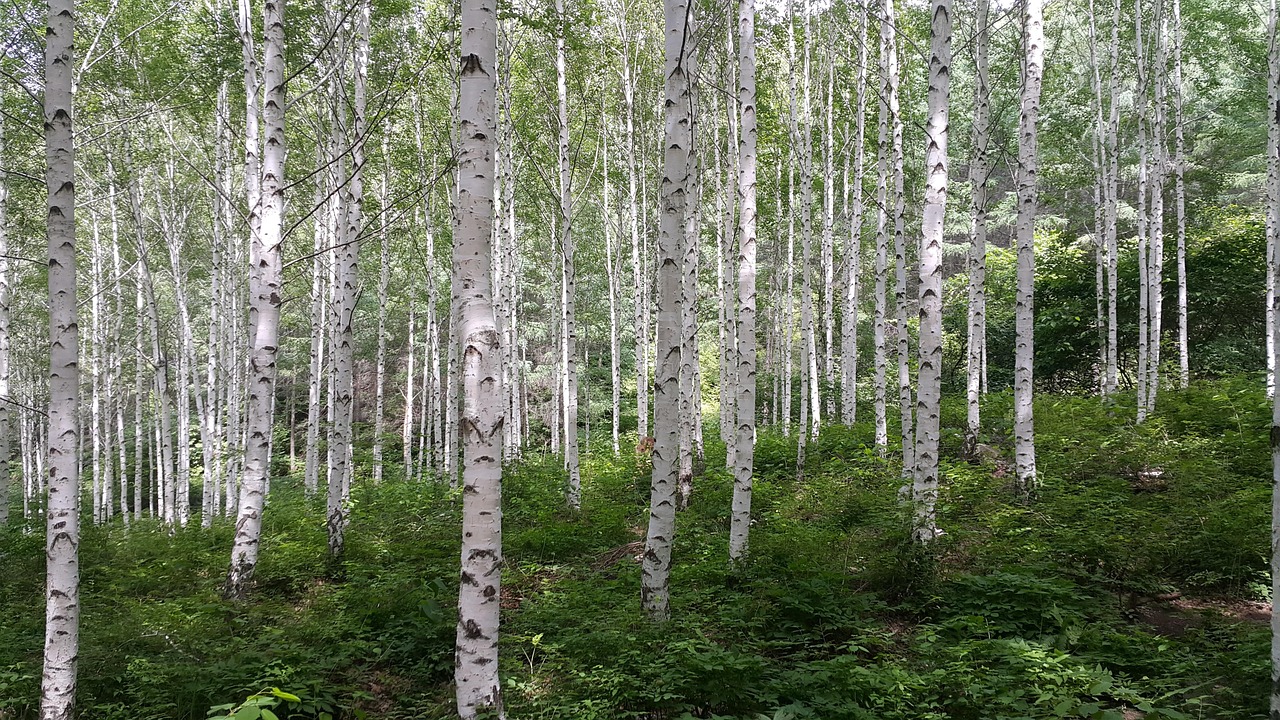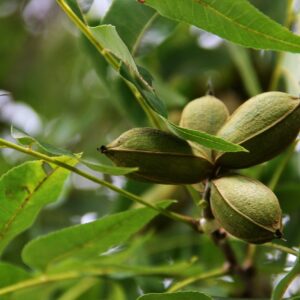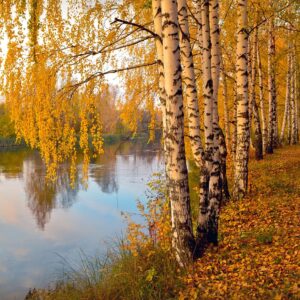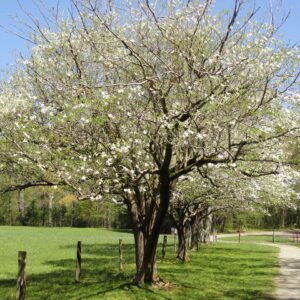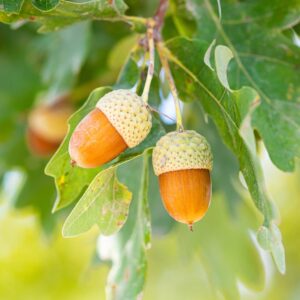Paper Birch (Betula papyrifera) – A Striking White-Barked Tree of Northern Forests
Paper Birch, also known as White Birch, is a medium-sized deciduous tree native to North America’s boreal and temperate forests. It is best known for its peeling white bark, golden-yellow fall foliage, and adaptability to cold climates. Historically, its thin, papery bark was used by Indigenous peoples for canoes, shelters, and writing material.
Bark: Bright white bark, peeling in thin, paper-like layers. Young trees have reddish-brown bark, which turns white within a few years. Bark has horizontal lenticels (lines), helping with gas exchange.
Leaves: Simple, ovate leaves, 2 to 4 inches long, with double-toothed edges. Bright green in spring and summer, turning golden yellow in fall. Alternate leaf arrangement along slender twigs.
Height & Spread: Grows 40 to 70 feet tall with a spread of 25 to 35 feet. Forms an upright, oval canopy, often with multiple trunks.
Growth Habit: Fast-growing, adding 12 to 24 inches per year. Short-lived compared to other hardwoods, living 50 to 100 years.
Flowers & Catkins: Male catkins (slender, drooping clusters) appear in fall and persist through winter. Female catkins emerge in spring and develop into small, winged seeds.
Roots: Shallow, fibrous root system, making it sensitive to drought and heat. Prefers cool, moist soils, often found near lakes, rivers, and wetlands.
Habitat & Range: Native to northern North America, from Canada to the northern U.S. Thrives in cool, moist forests, streambanks, and open woodlands. Prefers full sun and well-drained, slightly acidic soils.
Wildlife Benefits: Seeds and buds provide food for songbirds, grouse, and small mammals. Deer and moose browse on young twigs and leaves. Provides shelter for cavity-nesting birds like chickadees and woodpeckers.
Historical & Indigenous Uses: Indigenous peoples used birch bark for canoes, shelters, and baskets due to its waterproof and flexible nature. The bark was used for writing and artistic etchings because it peels into thin sheets.
Fire-Resistant Bark: The high oil content in the bark allows it to burn even when wet, making it a valuable fire-starting material.
Short Lifespan, But Fast Growth: Although Paper Birch grows quickly, it is relatively short-lived, often declining after 70 years in urban settings.
Growing Paper Birch: Best for cool climates, streamside plantings, and naturalized landscapes. Thrives in full sun, requiring moist, well-drained soil. Sensitive to heat and drought, making it unsuitable for hot, dry regions. Companion trees include evergreens (spruce, fir, pine) that provide shade and help retain soil moisture. Prone to Bronze Birch Borer in warmer climates, so best planted in northern areas.

